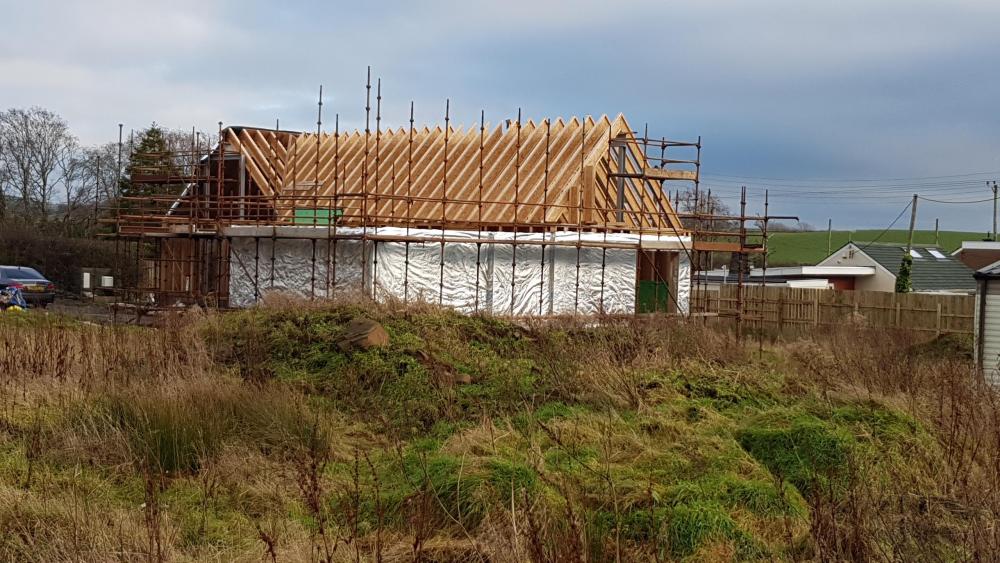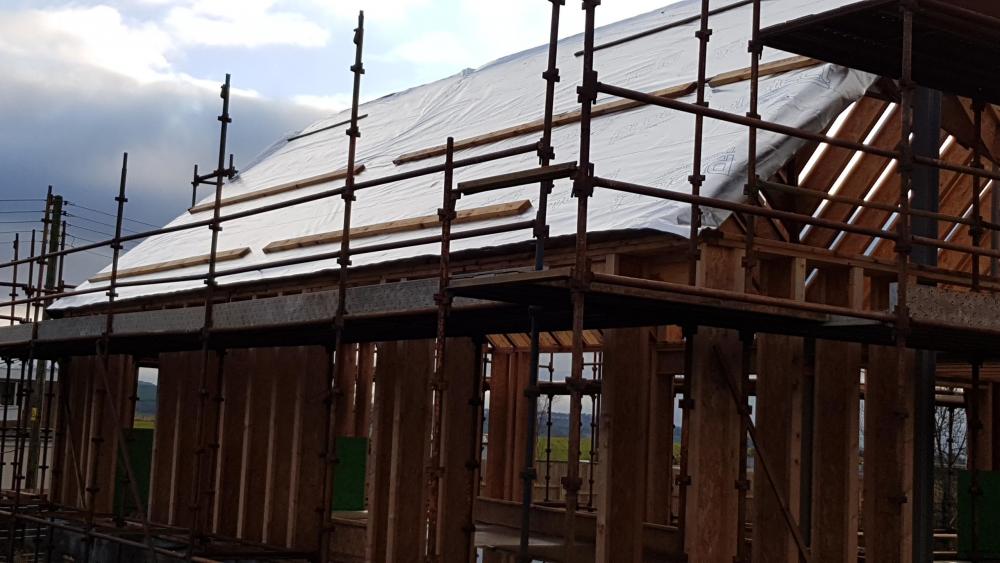Leaderboard
Popular Content
Showing content with the highest reputation on 12/23/19 in all areas
-
The impact driver arrived this morning. Seems every bit as good as shown in that video by AvE. Although it is advertised as being a 1/2" square drive machine (which it is) what isn't clear is that it also has a standard 1/4" hex socket in the square drive, so works fine with screwdriver bits, without an adapter (handy, as it keeps the front to back profile short). I bought from this "UK" eBay seller: https://www.ebay.co.uk/itm/372853575848?_sp=p2488212.m41214.l9765 for the princely sum of £25.98, including delivery, but I see they've now upped delivery to £9.99, so one will now cost a whopping £33.58. I've given the thing a quick test, with both genuine Makita and Makita clone battery packs and reckon it's probably pretty close to the quoted spec. Had no problem loosening the wheel nuts on my car as a test, and they were done up pretty tight (needed to get the torque wrench out to tighten them back up correctly, though)2 points
-
Hello, Another post and another year of self building. Since my last entry we have made some progress in a few areas. I previously mentioned some trouble that I had with the treatment tank. We choose a Tricel model as it is widely installed on Skye and the local merchants all suggested it. The alternative was a rotating one with moving parts which I was keen to avoid. Other models were getting costly to be delivered and would require some form of mechanical unloading at my end. After my post I had a fair bit of communication with the manufacturer and the merchant. I didn’t back down and didn’t pay, in the end they backed down and sent a replacement. This went via Inverness and the merchant wanted to inspect before delivering to Skye, guess what they found? Three tanks later and it’s now in the ground. Discharge will be to a ditch, which at this time of year is wet but for most of the year is usually dry, this runs off to a wooded area at the bottom of the croft. Our original warrant and SEPA approval was for a traditional septic tank and soakaway (amended installation was agreed with both parties). After some posts on BH it was clear that a treatment tank would be the better option all around. I should say that a traditional septic tank and soakway is still quite popular in the Hebrides, two recent self builds both installed this set-up. Whilst the digger was here, we decided to get some further work done. A gravel drain was put around the back and is working well. Rotten rock which was at the front of the house was used to bring up the level around the house. A big pile of clay and top soil (or mud mountain as some called it ?) from works back in 2015 was then landscaped around the site. We are pleased with how the house sits in its surroundings. Finally, here is one from the Broch. People have been self building here since the Iron Age! Although this one is down to foundation level with the rock reused multiple times in various self builds during the last two thousand years. We now need to put the fence back up around the site to allow our sheep to come back on the croft. Today’s job has been digging and fitting four posts. The electricity connection was moved from the temporary supply box into the house. The cost for this work was cheap at around £200 and done by two very tidy and polite SSE workers. This simple homemade box was constructed from scraps and has lasted four long Hebridean winters but will now be recycled for another purpose. Talking of recycling, I don’t have a skip on site and everything apart from dust is stored and will be used for another job. Internally all our efforts have been on the upstairs of the house. Upstairs is an easy win to get completed as it’s just our two children’s bedrooms and an upstairs living area. A bit of time has been spent with our MDF skirtings, architraves and cills. We used real wood in our last build project and it has moved slightly over the years, MDF won’t do this and is cheap, but requires work in sanding and painting. Carpets are due to be fitted at the start of January and once these are down it will just be electrical sockets, lights etc to finish the rooms. Internal decorating can then commence downstairs. That’s about it, the kitchen has been fitted and downstairs flooring is done but both are covered by copious amounts of cardboard and I’ll upload some photos once this is removed. Thanks for reading. This will be the last post for 2019, hope everybody has a great Christmas and best wishes for your projects in the New Year!1 point
-
Yes, but you knew what you wanted to achieve. If there is mineral wool insulation, air can easily travel though it. Not so bad with sheets of properly fitted and sealed PU.1 point
-
We were concerned about commercial matters getting mixed up with the not for profit forum. I will dig out the thread and see what we said.1 point
-
If it's the same as the one I've just bought, then I reckon you may find it as good as a genuine Makita. Mine's identical to the one in the vijeo by Uncle Bumblef*ck above, and he beat the living daylights out of the thing and it carried on working. I doubt mine will get a massive amount of use, but just knowing it will easily whizz off really tight wheel nuts makes it worth having. I already have a set of deep impact sockets left over from when my ancient (at least 40 year old) air impact gun was still in the land of the living, so I've not had to shell out for any extras.1 point
-
On that reccomendation I just bought the one below it on ebay. £30 Inc delivery and 3 sockets. What could possibly go wrong ? https://rover.ebay.com/rover/0/0/0?mpre=https%3A%2F%2Fwww.ebay.co.uk%2Fulk%2Fitm%2F3728408524961 point
-
Bit like a French drain: pipe with perforations surrounded by gravel or whatever to allow mixing and dilution of waste water with surface water and to generally slow the flow down. Allows a certain amount more treatment of the water as a backup to the treatment plant.1 point
-
Why don't BuildHub set up a trade account, then anyone can use it. As long as it is cash only.1 point
-
Thanks @Temp. That's really helpful. I think the shower waste also explains why @PeterW suggested a second stack next to the shower (I was puzzling over it). On the 1-in-10 rule for SVPs, when I am next on site I am going go around the neighbours and see if I can spot any other local SVPs. The nearest boathouse has just been rebuilt. I hope that they will have one. On a related point, I recall a while ago that @PeterW implied that the waste from a washing machine was uniquely useful for keeping the drains clean. The regular outflow of soapy water (often containing digestive enzymes too) was ideal for the purpose. I was therefore attracted by the idea of a single stack with the washing-machine waste-water flowing past the WC. But I now realise that the longer run from the shower might then be a problem. I will now pay close attention to the shower wastes (both of them). And I assume I should also pay attention to the bath drain. Not as low as a shower but still quite low, especially as I plan to have a freestanding bath.1 point
-
Aside: If Building Control are like mine they may want stack 1 to be open vented above the roof but say stack 2 can have an AAV. This isn't what the regs say. I believe both can be AAV if nearby houses have open vents. Its just some BCO are die hards and you have to pick your battles. I think your proposed routing will work. If you or BC are concerned about the length from stack 1 to the IC you could put another IC in the corner of the L - Something like drawing below (with or without the other IC I added further south). I'd be tempted to move the stacks nearer the shower wastes. Shower waste outlets are lower than WC wastes so they can actually be harder to run. The connection from the shower into the stack may have to be in the slab so needs planning now if you want to avoid a plinth under the shower tray or chipping the concrete away from around the stack. If you plan to have deep insulation above the slab it might be all fit in that but worth making a cross-sectional drawing showing the shower tray, waste, pipe falls and actual connection into the stack for shower and ditto for the WC. We had some difficulty with the shower waste to stack connection in one of our bathrooms. The shower waste has to drop down into a cupboard in the room below and then connect into the stack lower down. There wasn't room between the WC connection to the stack and the floor. This sort of issue is harder to fix in a bungalow. The regs also specify a minimum height from the bottom of the large rad bend to the lowest connection into the stack - so check the large rad bend will be deep enough in the ground to allow a low connection for shower. Moving stack 1 to the south would mover it nearer the shower and should make the above a bit easier but not by much Not shown but you could also consider moving stack 2 south against the southern wall in the corner of the cupboard of master bed for same reason.1 point
-
Can you post a drawing of whole house? Usually best not to run drains under the house if possible. Most builders aim to have the 110mm from WC exit the house by shortest possible route and then run it around outside the house to join them up. So they draw a line from WC to nearest outside wall and put stack there. Then run smaller pipes to that stack. The strategy doesn't always suit so it's not cast in stone. A drawing showing the house in relation to the sewer in the road and which way the land slopes would help us comment. Pay particular attention to the pipe runs for showers. If you want a low profile shower tray with no plinth this should be 2" pipe and have the right falls and as few bends as possible. At the bottom of a stack you should use a large/long radius bend to turn the flow from vertical to horizontal eg not regular short bend. Example.. https://www.travisperkins.co.uk/plastic-drainage/osmadrain-double-socket-long-radius-bend-87-5-110mm-4d581/p/710624 Take care with the ground floor WC. Many people find they have the pipe coming up through the floor in the wrong place - eg too near or too far from the wall or too short. I recommend bringing it up in the corner of the room and building a stub/short stack with AAV. Then you can put the WC anywhere and run 110mm from it to this stub stack in boxing. Perhaps not as pretty as getting it exactly right but less prone to error. If you have space a false wall looks better than boxing. You can also hide the cistern in it you want or go for a wall hung WC. If it's not full height the false wall also provides a shelf to put stuff and possibly cupboard space.1 point
-
We were just to to discharge to the burn via a "partial soakaway" with no size mentioned. The reality is it passes through a soakaway and anything that makes it to the other end goes to the burn. In the summer it does indeed attenuate the flow to the burn, but in winter it probably acts as a land drain to limit the local rise of the water table in that area and probably more comes out of the end into the burn than goes in from the treatment plant.1 point
-
In England we had to have a 10m rumbling drain purely because the ditch dried out in the summer.1 point
-
In my limited experience SEPA will want some sort of filter on the output of the treatment plant as a sort of belt-and-braces thing. For me they want a 50m rumbling drain, @ProDave needed a bit less. I'm not sure how that'd work combined with any pumping.1 point
-
Pumping up an incline to a head of 10m or so isn't usually a problem. The pump on our unit is the lowest rated one they do and will easily pump to 8m head: https://webuildit-ltd.co.uk/product/bio-pure-1-pumped-outlet/1 point
-
Ours is a 45 degree roof, almost the standard build up here. I have to say there is a lot to recommend about a 45 degree roof, not least the ease of marking out stuff to cut.1 point
-
1 point
-
1 point
-
It can, once in a very long while, be useful to have the blade on a hacksaw teeth up, of course.1 point
-
high up on the back put a thin piece with a hole in it - use the following to attach it https://www.screwfix.com/p/hafele-keku-fixings-m4-x-48mm-10-pack/8663T?tc=GC5&ds_kid=92700046252832711&ds_rl=1241687&ds_rl=1245250&ds_rl=1249413&ds_rl=1245250&gclid=EAIaIQobChMIqPrn4K3C5gIViaztCh2PGw-hEAQYAyABEgKuI_D_BwE&gclsrc=aw.ds Finger through hole to detach the piece. The lower piece is attached using https://www.ironmongerydirect.co.uk/product/keku-drop-on-clip-frame-and-panel-pack-black-pack-10-355267?vat=1&shopping=true&infinity=ict2~net~gaw~ar~387176555199~kw~~mt~~cmp~Smart+Shopping+>+Top+Products~ag~Ad+group&gclid=EAIaIQobChMIqPrn4K3C5gIViaztCh2PGw-hEAQYBCABEgLZ-vD_BwE&gclsrc=aw.ds with the top panel removed this can then be lifted up and then out. With a thin top panel, unless you lay on the floor, no one should see it. Any good for you?1 point
-
@craig I am a mod and although i may be speaking out of turn i agree that your original post was made with the best of intentions. AFAIC you went about it the right way by declaring your professional/commercial interest, contributing to other threads and then creating what i consider a useful checklist for the general public, this is being discussed by the moderation team as we speak so this thread may well be edited back to something useful instead of the mess it has become but as @Barney12 said don't be disheartened. you haven't got any black marks yet Ed1 point
-
My view is that this thread has now run it's course, and that the summary that @recoveringacademic has carefully compiled here: should be considered to be the definitive source of information for self-builders. For those who are not self builders, but who are building as a part of a business, and so are bound by CDM 2015, as they are not domestic clients, then I would suggest that it is very unsafe to rely on information from an internet forum when it comes to getting legal advice. I'd also add that relying on any legal advice obtained from someone not practising law is also inadvisable. I've seen several accident cases where individuals made assumptions as to their liability based on advice obtained from the media, friends and even consultants, that proved to be wrong and ended up costing them dearly. Self builders are, by definition domestic clients as far as all building-related legislation is concerned, and the guiding principle to be remembered is that legislation aimed to improve the safety and welfare of workers on construction sites, in whatever statute, is not intended to apply to someone who is a domestic client. The sole exception to this is the law that covers each and every one of us every day, with regard to the reasonable duty of care we each have to each other. It is worth remembering that the word "reasonable" has no definition in the law of England and Wales (not sure about Scotland and NI, but I think it's the same). If you are an ordinary citizen, with no specialist training or knowledge, then what is considered "reasonable" in terms of your actions or inactions will be judged on that basis. As soon as you seek to acquire recognised skills and knowledge that means that a court may consider that you have an enhanced duty of care your liability increases. As an example, I used to teach electricians at technical college many years ago, and for years held a ticket myself. Even though I no longer hold a valid chit to work as an electrician today, I would still be considered by a court to have a higher duty of care to others in terms of electrical advice than someone with no such experience. It's the reason I spent a great deal of time clarifying certain points in my blog, after making a typo here that was picked up on and used to condemn me as giving dangerous advice. I felt strongly enough about making sure that my own liability was reduced as to not only quickly correct the typo but also to spend three days writing two articles to clarify things. Those articles were not written from the goodness of my heart, they were written to reduce my personal liability!1 point
-
I'm not really sure what's going on here. Whether you are getting a firm in to fit new windows or install a new roof, or build you a house, if you are DIY or Self Build, you are not responsible for CDM 2015. Whoever you bring in, whether a main contractor, one single contractors or a variety of contractors is responsible for ensuring they operate in a manner compliant with CDM 2015 and any other safety standards. If self builders start trying to 'appoint' people to roles incorrectly, not only are they going to confuse things but could create a legal mess should an event occur. It's the job of contractors, builders, joiners, decorators etc to ensure they work safely first and foremost. It's not our job to try do their job.1 point
-
I am a Chartered Architect and also carry out work regularly as a CDM Principal Designer. Within my company I also employ CDM specialists who do nothing else other than working as CDM Principal Designers. In my opinion the guidance in this thread by @JSHarris is correct.1 point
-
Well @Steptoe, I see the opposite. I see structured, polite, sometimes uncomfortable, but almost always useful discussion. I see engagement. I see help for bewildered self builders. To get this quality of debate elsewhere I'd have to pay a good deal of money.1 point
-
So, if I'm not employing sub-contractors (sparky, plumber, joiner etc), what am I doing? A domestic client isn't classed as an employer? This is an absolute minefield! Prefer trying to sort out the heating, and I'd rather have bowel surgery than do that at the minute.1 point
-
I regard this thread as one of the most important on this discussion group. For all of us. Mid way through the discussion I had a good old moan about the poor way in which relevant information has been presented at National Level. Given my professional background, its time to put up or shut up. I intend to spend a good chunk of time over the next few days re-presenting the content of this thread in a more easily digestible format. Before I post it, I'd like to circulate the content to people who have posted in this thread to make sure I have represented their views accurately. I will also have a go at presenting the core information in a simplified graphical or other format. I'd particularly welcome constructive criticism from H+S Subject Matter Experts. If any of you read this, please PM me and I'll send you an an advanced copy of our draft text, while keeping your H+S SME status confidential. An important word on my status as Admin. The term Admin is sometimes confused with Expert. I am definitely not an expert in anything except perhaps in delivering complex content online. I am especially keen to make H+S accessible, simple and clear. Since that's exactly what I did for a variety of subjects over many years in my professional career, and as there's a slight pause in our build, I thought I ought to just do it.1 point
-
So that's negligence and standard cause for prosecution under HSAWA as the team were employees of the company - no get out on that one, its general HSAWA stuff. So that confirms they were prosecuted under WAHR and not under CDM 2015 so its not a CDM 2015 prosecution at all. The actual notation on the prosecution outcome from the HSE was this : Leyland SDM (LSDM) Limited has been fined after four workers fell more than three and a half metres whilst carrying a ventilation unit. Westminster Magistrates Court heard how LSDM had been in the process of redeveloping a warehouse in Wembley. However, when four workers tried to move a ventilation unit into position, the working platform became overloaded and gave way. Neither the work at height nor the lifting operations were planned properly. Two of the four injured men suffered leg fractures, while a broken collar bone were among the other injuries caused by the incident. A Health and Safety Executive (HSE) investigation found the company failed to manage the risks when working at height and carrying out the lifting operation. The company also failed to have the right level of trained personnel and supervision in place to carry out these tasks safely and effectively. LSDM of Fourth Way, Wembley pleaded guilty to breaching Regulations 6 (3) of the Work at Height Regulations 2005 and Regulation 4 (1) of the Manual Handling Operations Regulations 1992 they have been fined £450,000 and ordered to pay costs of £1038. Speaking after the hearing HSE inspector Jack Wilby said: “The safety failings by this company are severe and it is lucky that the injuries were not more severe. This incident highlights the importance of planning work, in this case both for lifting operations and working from height, to ensure it is carried out safely.” I've managed to dig into the legislation that makes interesting reading as its not as clear as the HSE website makes out !! Below are clauses 5 & 7 which relate to this discussion, and a very interesting definition.... [Full Legislation is here : http://www.legislation.gov.uk/uksi/2015/51/introduction/made ] Firstly ... “domestic client” means a client for whom a project is being carried out which is not in the course or furtherance of a business of that client; That defines self builders are as domestic clients unless they are building to sell. So onto the PD and PC appointments.... Appointment of the principal designer and the principal contractor 5.—(1) Where there is more than one contractor, or if it is reasonably foreseeable that more than one contractor will be working on a project at any time, the client must appoint in writing— (a)a designer with control over the pre-construction phase as principal designer; and (b)a contractor as principal contractor. (2) The appointments must be made as soon as is practicable, and, in any event, before the construction phase begins. (3) If the client fails to appoint a principal designer, the client must fulfil the duties of the principal designer in regulation 11 and 12. (4) If the client fails to appoint a principal contractor, the client must fulfil the duties of the principal contractor in regulations 12 to 14 Application to domestic clients 7.—(1) Where the client is a domestic client the duties in regulations 4(1) to (7) and 6 must be carried out by— (a)the contractor for a project where there is only one contractor; (b)the principal contractor for a project where there is more than one contractor; or (c)the principal designer where there is a written agreement that the principal designer will fulfil those duties. (2) If a domestic client fails to make the appointments required by regulation 5— (a)the designer in control of the pre-construction phase of the project is the principal designer; (b)the contractor in control of the construction phase of the project is the principal contractor. (3) Regulation 5(3) and (4) does not apply to a domestic client. So.... The architect is on the hook for the Principal Designer in law as regulation 5(3) does not apply to a domestic client and therefore if a domestic client does not appoint a principal designer then the architect has no choice if they undertook any work (ie design / planning ) as they are defaulted into that position in legislation. The law does not allow you to divest yourself of a legal responsibility under statute, so unfortunately an architect cannot decline being PD as they are noted in the statute as taking that role.1 point
-
Sorry, but I strongly disagree that self-builders fall into any sort of trap. The law is clear, and has been for decades, and CDM2015 hasn't changed anything from CDM2007, as far as self-build is concerned. I gave examples earlier of the way we contracted for our build. This was before CDM2015, and so under CDM2007, but nothing has changed at all in respect of our responsibilities. Take the very first parts of our build as an example. A structural engineer designed and specified the major part of the ground works. He took full responsibility for that design. The ground works contractor had a firm price contract that included the breakdown of responsibilities, and he took full responsibility for the site, at his own request (as he had heavy equipment on site). I was most certainly not competent to "control the way construction work was carried out", and nor did I wish to be. I could only go on site with the contractors permission, in fact, because he controlled it. The contractor worked to the design and specifications that the structural engineer had produced, and I had no control over that, either. Had there been an accident during that phase there is no way whatsoever that I would have carried any liability. Once the ground works were completed, the site was handed to another contractor to drill the water borehole. Again, that contractor had full responsibility for the site and there is no way that I could be deemed to be in control of what they were doing. Apart from anything else, the responsibilities were clearly defined in the contract, as a part of the contractors standard terms and conditions. Once that work was completed, I again passed control to the next contractor on site, to build the foundations and supply and erect the house, again with a written contract that was clear as to where responsibilities lie. Once more I could not have been deemed to be "in control" at all, I was very definitely a domestic client. The same applies to the follow-on trades, they all controlled and managed their own work, working to a specification that they had agreed in writing. At no time did I ever "control the way construction work was carried out" once a contract had been placed. I certainly did bear responsibility for all the work I did on my own, but that comes within the definition of DIY and is well outside the scope of CDM. I'm not in any way knocking CDM, for the building industry it is a key way to ensure that work is controlled and managed safely. I in my last job before I retired I managed a programme that included a £96M construction project, and the main contractor (SRM) had a very well-structured safety management system, with rigorous control of all work and access on site. What I am saying is that self-builders seem to be being misinformed, perhaps by people trying to sell their services, as to what does and does not apply to them. The key point is that CDM2015 has not changed anything material for self-builders; things remain as they have been under CDM2007, despite all the stories circulating to the contrary.1 point
-
But this is exactly how HS&E law applied before this, all CDM2015 has done is spell out something for domestic clients that has always applied. The facts are that this very, very rarely ever becomes a real issue for self-builders. What's extremely annoying is that unwitting self-builders seem to be getting fleeced by people who have set up businesses to make money from the change in legislation, and that annoys me a great deal.1 point







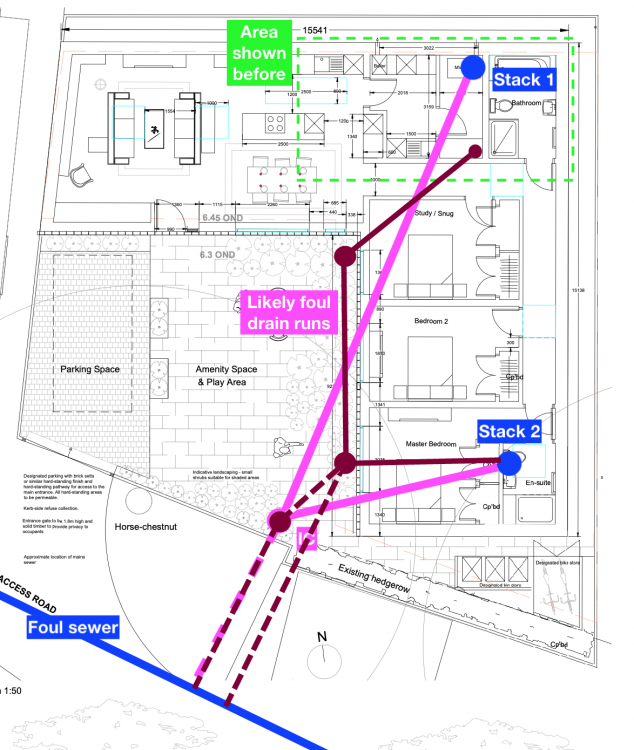

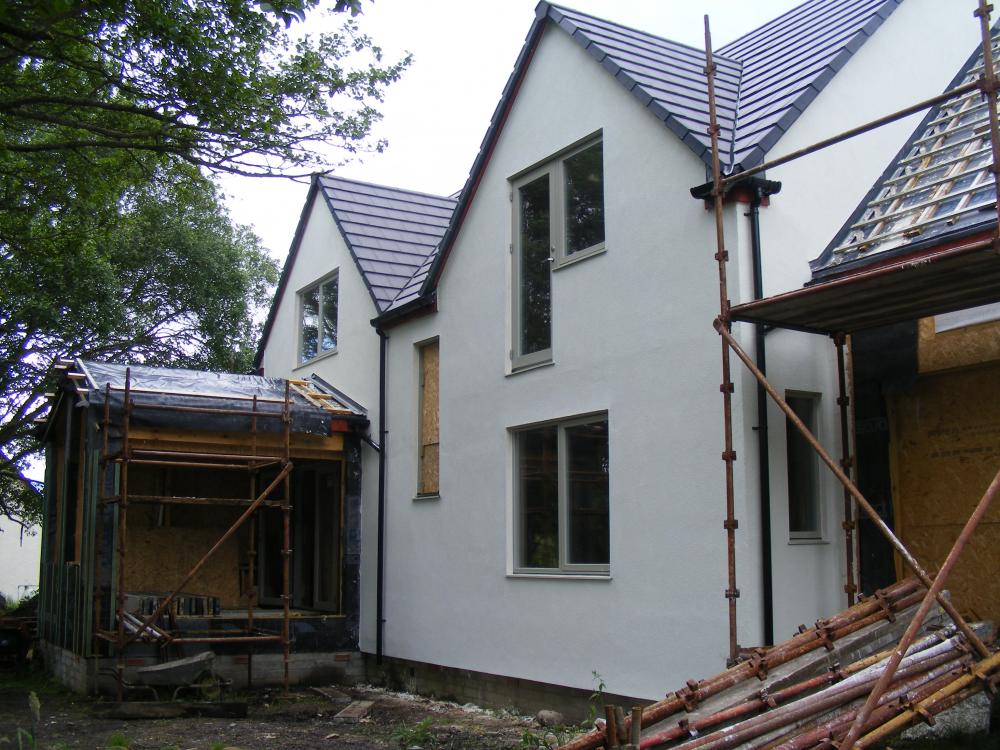
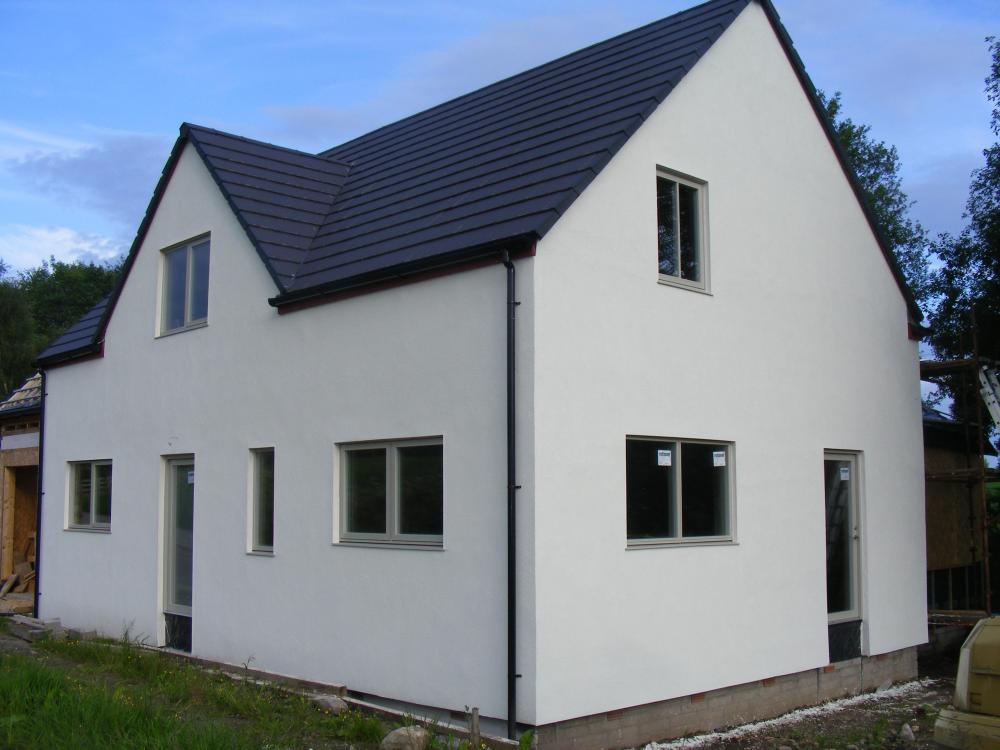
.thumb.jpg.bac90f3bbf6868cf2118d010d936c99d.jpg)
